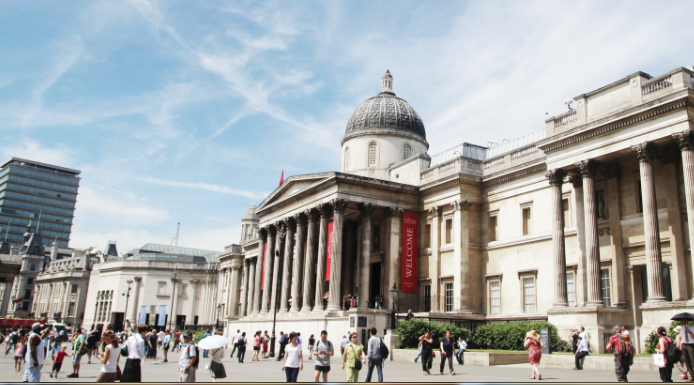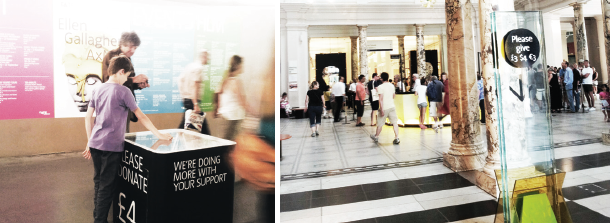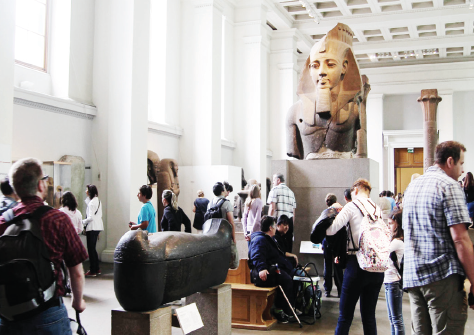
“The cultural industry will be the last battlefield of the 21st century era of cultural wars.” This sentence was spoken by Peter Drucker, an eminent economist who established modern business administration. It shows directly the status of culture in today’s 21st. Now culture is not a luxury or extravagance anymore but a necessary weapon for the future. Also, in order to nurture the cultural industry, people need a clear understanding of cultural life. Based on this thought, the Sookmyung Times visited in London, England for a week through the global explorer program with the idea of “Cultural strategy is the strategy of the future.” People often say an economy is a means of survival whereas culture is the means to exist well; in other words, it is a nation’s quality of life. Through the U.K. calls the cultural industry a creative industry, let’s really see how one’s cultural life affects and improves the cultural industry.
The U.K., the Empire on which the Sun Never Sets

How was it possible for the Harry Potter series to become a great success? Were creativity of its storyline and being at hit at the box office the main causes of its success? Actually, behind its huge success was enormous support and elaborate strategic ideas by the British government. Support was given under the project called ‘Creative Britain,’ which is the long-term plan of the British government to create a platform in which to develop creative business ventures. This market mechanism is generally referred to as ‘Creative Economy’ and is what the Korean government is also promoting nowadays. Under this structure, any creative power idea like the Harry Potter story could debut freely to the world with support from the country.
Why does the U.K. implement such a policy? In 1998, the British government declared its push ‘Creative Britain’ to secure national competitiveness by fostering its cultural art industry. At that time, Britain was undergoing an extreme business depression because of IT Bubble Decay1, so an innovative policy was needed to boost the economy. Above all, the British government started supporting its cultural industry instead of manufacturing, which had been nurtured in the past. Visual design, fashion, music, imagery, literature, movies, sports and museums were supported actively, and they even received various types of aid from citizens and private enterprises. After years of growth, the strategy now shows clear success. Popular music
“Admission Free” Museums
In the U.K., most museums and galleries are free; examples include the British Museum, Tate Modern, and the National Gallery. The policy arose from the same strategy ‘Creative Britain.’ Free admission allows people from all around the world to visit them more easily. The museums receive financial aid from the government and donations from visitors.
The landmark policy of providing free access to national museums will reach a 10-year. Free admission to all permanent collections at DCMS2 was introduced for children in April 1999, for people over 60 in April 2000, and for the entire general public in December 2001.
According to Visit Britain, Britain’s major museums and galleries earn the country £1 billion a year in revenue from overseas tourists. A recent report on Britain’s culture and heritage showed that museums and galleries are key travel motivators for many international visitors to Britain. Visits to these museums in London increased by 151 percent after implementing free admission. Secretary of State for Culture, Olympics, Media and Sport Jeremy Hunt said, “We have the finest museums and galleries in the world. But unlike other major capital cities, they are free to visit in this country. Our free museums and galleries ensure that culture is for everyone, not just the lucky few.”

Collections in Britain;
Given By Citizens, For Citizens
The British Museum contains the world’s most extensive collections from all nations and ethnicities from Ancient Egypt to the Roman Empire. The collections in Britain are colossal in scale compared to the ones in Korea for two reasons; a historical one and a cultural one. During the Renaissance Age, there was a temporary desire to collect Cabinets of Curiosities. The Cabinet of Curiosities is an encyclopedic collection of objects that range from natural history to archaeology to the arts and so on that scholars had collected from their travels around the world. During the vast exploration period by pioneers in the 1600s and during the Japanese occupation period of Korea in the 1900s, foreign scholars and explorers always had means to acquire national artifacts of interest. Another aspect that separates the museums of the U.K. from the rest of the world is their collections are also acquired through donations. Cultural treasures are perceived as common possessions that should be shared with fellow citizens. Therefore, a large percentage of artifacts at the British Museum and the National Gallery were received as donations from individuals. However, it is not only the rich and famous that engage in philanthropy. The government of U.K. is attempting to democratize philanthropy by encouraging civic pride and demonstrating how everyone, even an audience member, can help the cultivate culture. Culture Secretary Maria Miller claims that “We should not regard philanthropy as solely being about the rich to give more. Everyone has the opportunity to give, whether time or money.”3
Permanent exhibitions in the U.K. can be compared to bread-makers of a family with a steady income, and temporary exhibitions can be compared to second income suppliers of a family who have irregular but highly lucrative salaries. The Victoria and Albert Museum in London recently hosted an exhibition about one of Britain’s most legendary rock singers David Bowie. Britain is attempting to transform an iconic British figure into a cultural asset that citizens will draw people to an exhibition on him. Temporary exhibitions are used to create a unique cultural identity of the country similar to a product in high demand in the international market.

3Cs, Creative Calls Culture
In recent years, Korean society looks closely at an individual’s storyline—the experiences and activities an individual has growing up, which have influenced his/her life. Especially, this phenomenon is easily seen during the hiring of new workers for a company. In the past, companies looked at applicants objectively through evidence on paper, but now they evaluate applicants’ ability through their experiences. Making and explaining experiences are the storyline of a person and his/her life. This is a very similar with how a nations’ cultural industry can be improved. The most fundamental factor of a nation’s cultural industry is the creation of a storyline; in other words, a nation must form an identity. Our trip to the U.K. to investigate this effort firsthand led to vivid realization of this impressive result.
When the U.K. calls its cultural industry a creative industry, it doesn’t mean making something out of nothing. Arrangement and creation of a story as well as thoughts on how to make it remembered well by all are what the creative industry embraces. It is the core of the cultural industry.
* SMT REPORT is a feature article in three parts written after the Global Explorer Program.
1 Information Technology Bubble Decay; the IT growth rate has slowed down in the 21st century.
2 Department for Culture, Media and Sport; a department of the United Kingdom government
3 DCMS of the government of U.K., “How Digital Technology can Boost Philanthropy in the Cultural Sector,” December 14, 2012


